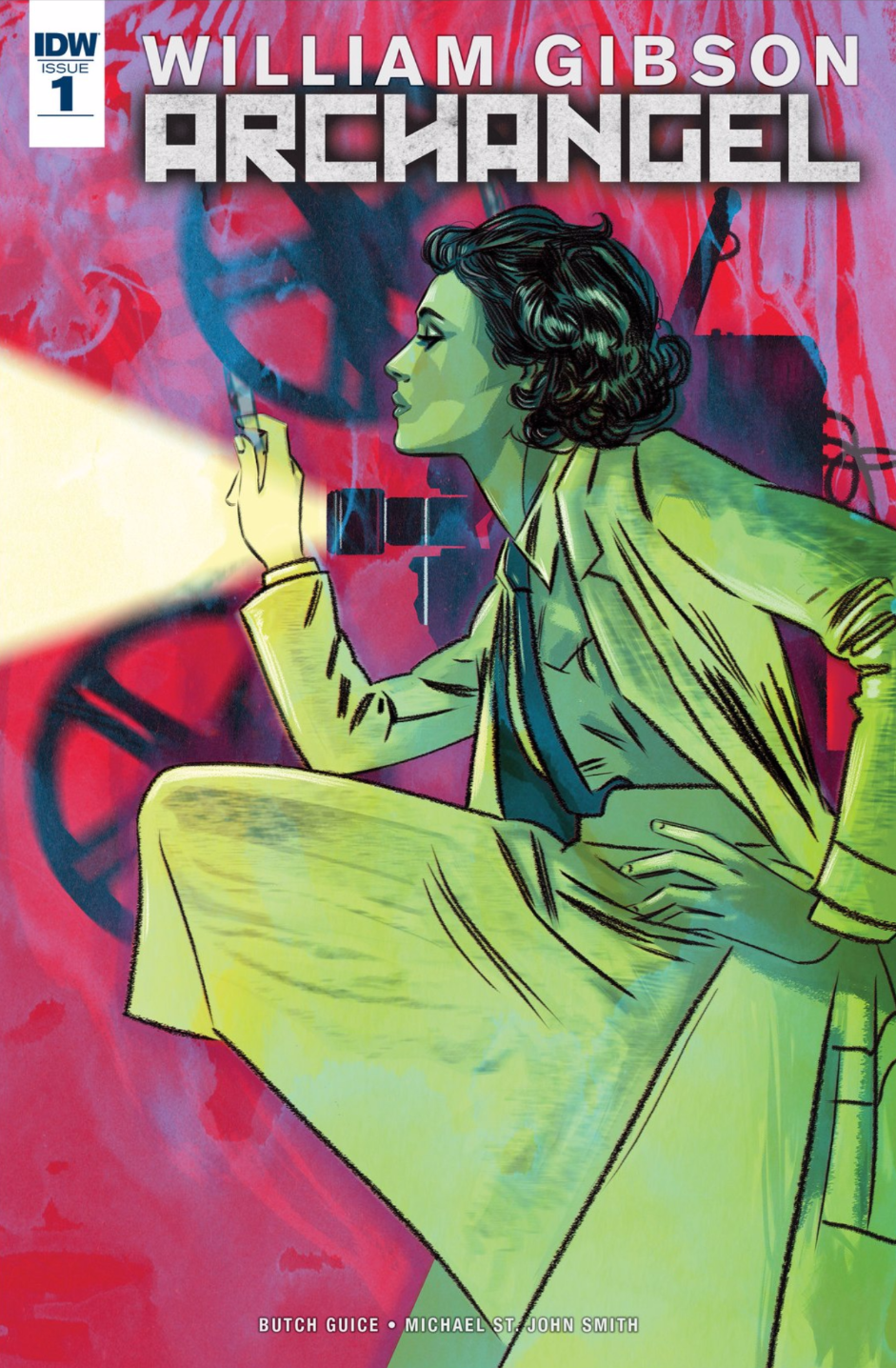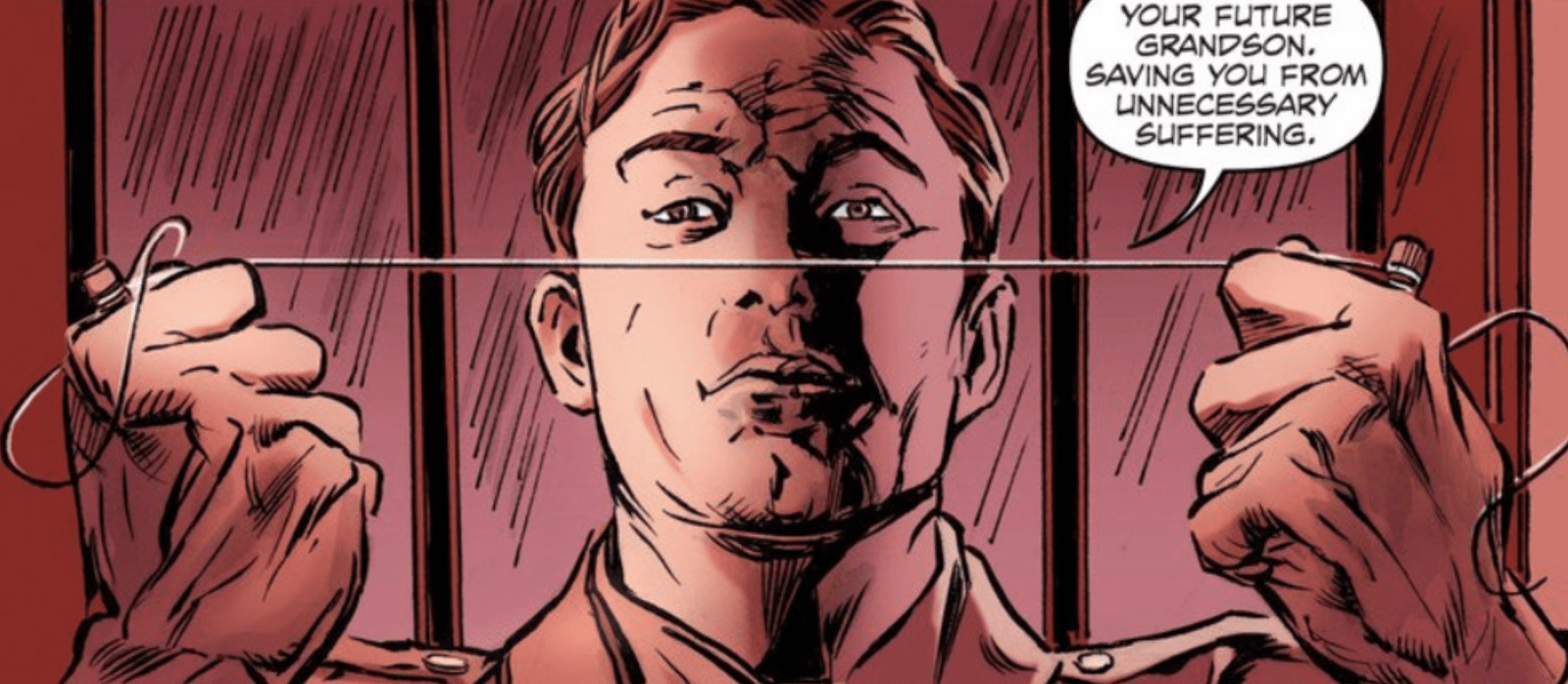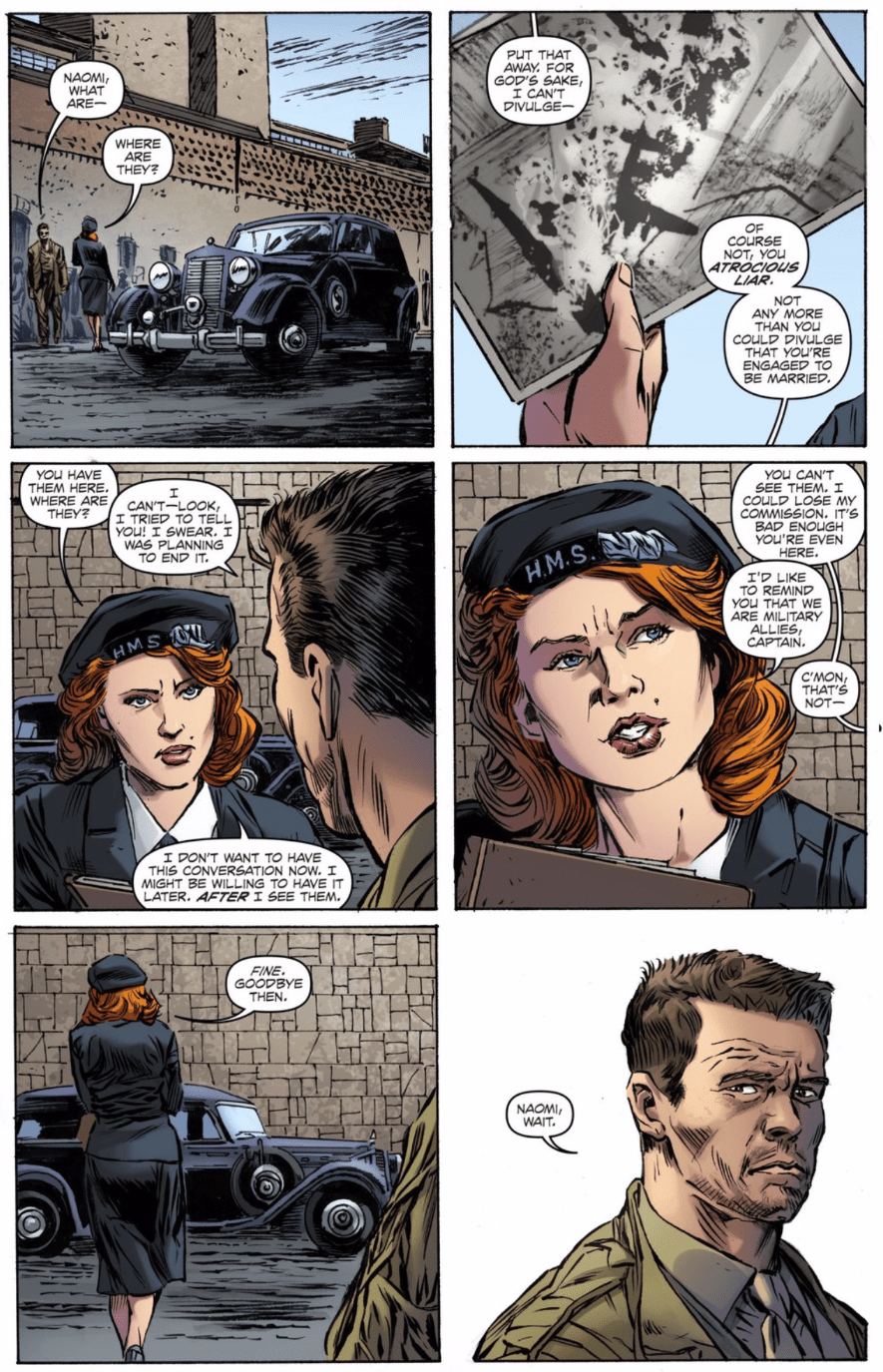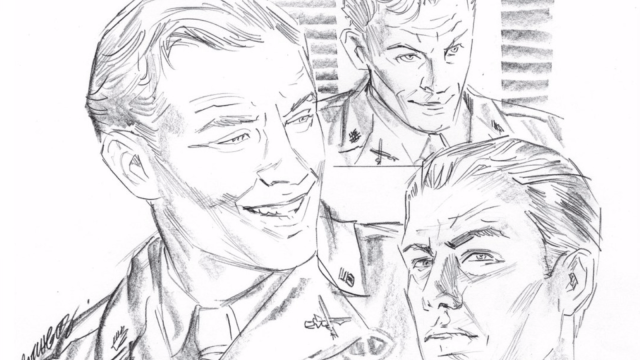Somewhere, in another version of the year 2016, America will have an awful president. His son the vice-president (terrible, right?) will go back in time and try to make it so that the USA is less of a smoking ruin than it already is.
William Gibson is one of the best writers alive today, a legend who wrote science-fiction classic Neuromancer and created the notion of “cyberpunk”. Yet, despite the seeming affinity his ideas have for visual interpretation, he’s never dabbled in comics until this year. Published by IDW, miniseries Archangel represents Gibson’s first work in the medium. The five-part project was co-created with Michael St. John Smith and is being scripted by Gibson with art by Butch Guice, Tom Palmer, Diego Rodriguez and Shawn Lee.


Released last week, Archangel #1 opens with Vice-President of the United States Junior Henderson getting bandages cut off his face after plastic surgery that makes him a doppelganger of his grandfather. The George W. Bush-alike and a team of military operatives use a quantum teleporter to catapult into the past of an alternate Earth with the goal of re-jiggering that timeline to manipulate events and come back with the spoils of their time-muckery. The shenanigans start with Henderson encountering his parallel-universe grandpa for the first and last time.

Privy to the scheme that the Henderson regime is undertaking, a scientist at the research facility where the time travel technology has been developed goes rogue and sends another team to try and stop the veep and his squad. However, their entry into alt-1945 gets botched, leaving one man dead and the other captured by American soldiers. US, British and Russian military intelligence all manoeuvre to glean what they can from the crashed 21st Century stealth bomber.
At the outset, Archangel feels a bit like it’s a collection of smash cuts from a larger, non-illustrated work, a peculiarity that betrays both strengths and weaknesses. If this were a novel, readers would be treated to world-building and concept explanations via the flinty angles of Gibson’s prose. We’d get to steep in major characters’ lives and learn about the friends and family stuck alongside them in in a damned world. Instead, this first issue hits the ground running, kicking off with a sick riff on time-travelling homicide. He’s not quite Hitler, but Junior Henderson is clearly a modern-day American despot, one who’s going back in time to kill his good-guy pop-pop. The story then hints at how military-industrial paranoia chews up individual lives for the so-called greater good, when Naomie Givens’ British espionage superiors tell her to re-engage with an American ex-boyfriend to find out what he knows about the crash.

Though the plot in issue #1 feels spare, I like how Archangel takes on a rote sci-fi premise and remixes it through a bleakly realistic dysfunctional filter. Gibson’s fiction often touches on the scarcity of resources in the world that humanity has made. (I was reminded a lot of Gibson’s latest novel The Peripheral while reading the debut issue.) The essential element in question is an intangible or psychological one like data, hope or purpose; the lack of it breaks society into factions and fuels the desperation that incites bleeding-edge scientific tomfoolery.
You can feel the have/have-not tension simmering in the background of the opening instalment of Archangel when military scientist Major Guadalupe Torres throws away her career with one gunshot. She risks it all because she knows that history is at a crucial inflection point. Archangel #1 suffers a bit from jargonitis, where terms related to the technological wizardry undergirding the sci-fi macguffin are under-explained. Definitions aren’t needed, though, because the needs of every character are immediately felt. Usually, I hate backmatter in a single issue of a comic because it can feel like it’s meant to pad out page count. But the notes and illustrations in Archangel #1 serve as an effective tease of further complications to come in future issues. They make it clear that the award-winning writer and crew aren’t just phoning it in. So far, William Gibson’s first comics outing retains the incisive thrill of his masterful work and has me wanting to more.

Comments
One response to “A Corrupt United States Government Tries To Re-Write History In William Gibson’s First Comic-Book Project”
Non fiction eh?
Yeah, what do you mean ‘another version’ of 2016? Sounds a lot like this one.